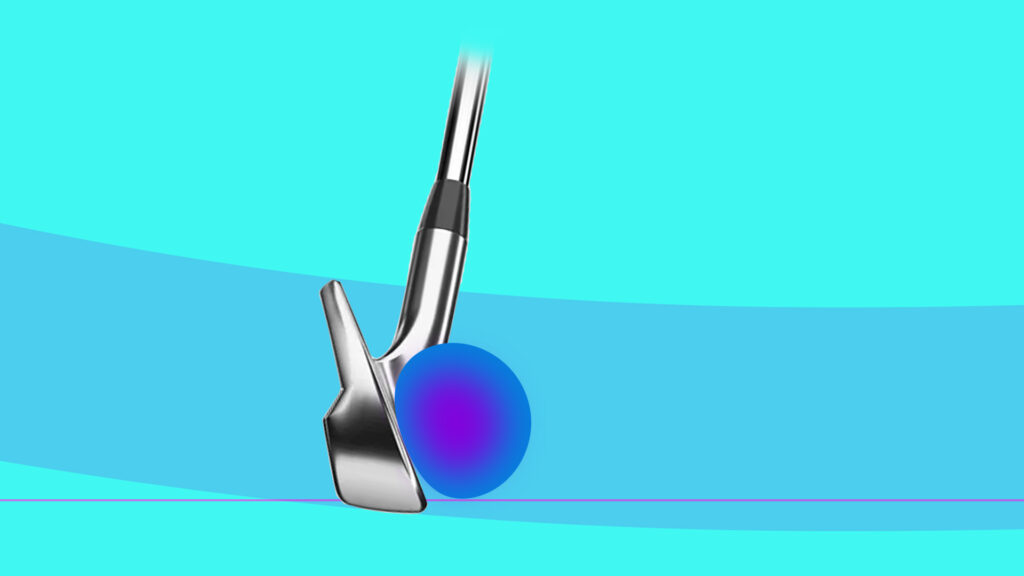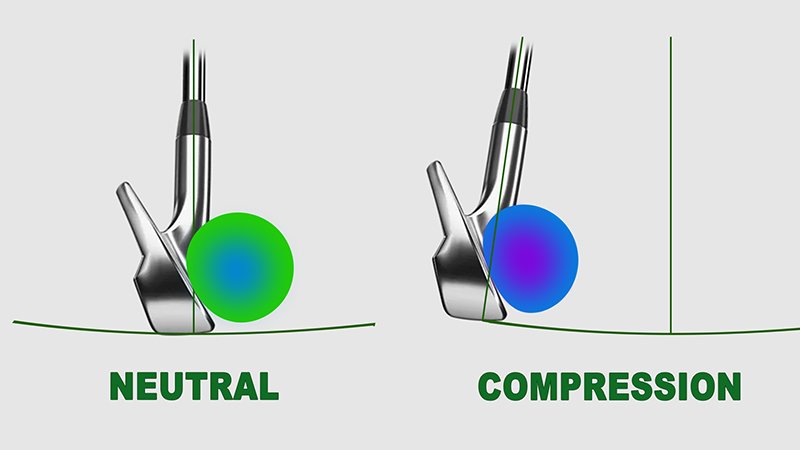How To Compress The Golf Ball: The Secret To Flushing Irons

Ever wonder why some golfers seem to effortlessly strike their irons? They send the ball soaring with that satisfying “thwack” sound and seemingly no more swing speed than you. The secret lies in a technique called ball compression. It can turn a good iron shot into a great one. Tour professionals use this ball striking technique to get the most out of their irons and golf balls. It’s the holy grail of iron play, and today, we’re going to unpack how you can achieve it.
What is Ball Compression?
Simply put, golf ball compression happens when you squeeze the golf ball against the clubface at impact for maximum energy transfer. This compression creates that crisp, clean contact and launch we all crave. All golf balls compress (deform) on impact just the same as a basketball compresses when bounced and it springs back up. Optimizing compression of the ball on impact improves ball speed, distance and spin.
Why Does it Matter?
Compressing the ball isn’t just about feeling good (though that certainly doesn’t hurt). It’s about performance. When you compress the ball:
- You generate more backspin
- Your shots launch faster
- The ball travels further
- You achieve better control and consistency
In short, it’s the key to those laser-like iron shots that make golf seem like the easiest game in the world.
How to Achieve Ball Compression
Now for the million-dollar question: how do you actually do it? Here are 5 simple tips to help you start compressing the ball like a pro:
1. Hit Down on the Ball

This might sound counterintuitive, but to get the ball to launch efficiently, you need to hit down on it. This makes the apex of the bottom of your swing about 2-4 inches after you’ve hit the ball. This downward strike is what keeps the golf ball compressed against the clubface and creates the compression.
If you look at a Tour professional hit irons, they always take a divot after they have struck the golf ball. This is because they’re hitting down on it so the ball compresses.
2. Keep Your Hands Forward: Ahead of the Ball
At impact, your hands should be slightly ahead of the ball, about 2-3 inches. Shifting the top of the shaft forward helps you to hit down on the ball. It creates a downward angle of attack and helps you trap the ball against the ground. It’s important to keep the ball position between your feet the same, do not simply move the ball back in your stance.
Note that moving your hands and shaft forward will decrease your loft angle. This is normal and you will likely hit lower trajectory shots, especially at the beginning.
3. Shift Your Weight Forward
At impact, about 80% of your weight should be on your lead foot. This forward lean helps you hit down on the ball. Practice this feeling by hitting some shots with your back foot unweighted at impact. It is very helpful to film your swing on your phone to understand and review your weight transfer. Again, watch how the Tour pros do it, swinging a golf club is a full body motion.
4. Maintain a Strong Grip Pressure
Keep your grip pressure consistent throughout the swing. A firm (but not white-knuckle) grip will help you maintain control and feel the clubhead through impact. Remember that you are not just striking the golf ball, you are continuing your swing speed and control after impact.
5. Accelerate Through Impact
Don’t slow down as you approach the ball. Accelerate through impact to really compress that ball. Think of it like you’re trying to swing past the ball, not just to it.
This is the real secret when learning how to compress the golf ball. Because you’re still accelerating the ball compresses against the club face for longer, allowing you to compress the ball more effectively.
Golf Ball Compression Ratings
It is not just your swing technique that determines golf ball compression. Each golf ball has a compression rating which determines how soft (low compression) or hard (high compression) it is.
Low compression balls compress more easily especially with slower swing speeds and poorer techniques. Whereas high compression balls are harder, they’re suited to high swing speeds and a golf swing that compresses the ball efficiently. Low compression balls are ideal for beginners and high compression balls are perfect for Tour pros.
When selecting a golf ball you should always consult a compression rating chart to match your swing with your ideal compression.
Misconceptions Around Compressing the Golf Ball
Many believe that compressing the golf ball is compressing it against the turf, this is simply not true. The golf ball compresses on all shots, the art of compressing the golf ball is simply to optimize how it compresses against the club face.
Conclusion
All the best players compress the ball with their iron shots. Irons are the most common club in your golf bag and account for the majority of your approach shots. Improving your iron game and learning how to compress the golf ball will lower your scores.
Remember, golf is a journey, not a destination. Don’t get frustrated if you don’t nail it right away. Keep at it, and soon you’ll be flushing those irons like never before.
